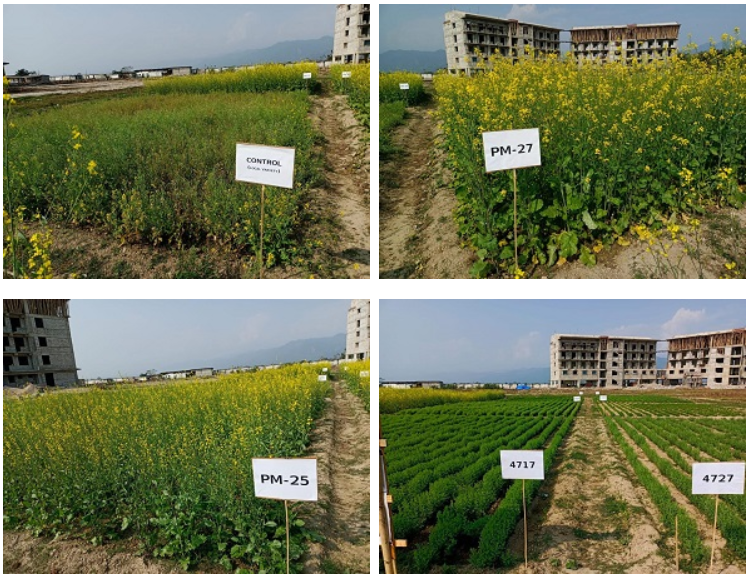
In a recent study conducted by the team from ICAR-Indian Agricultural Research Institute (IARI), Gogamukh, Assam, significant findings have emerged regarding the performance of various Pusa mustard and lentil varieties in Assam's agricultural landscape. The study, which included field experiments at IARI's research field in Dhirpai Chapori, Gogamukh, Dhemaji, Assam, as well as in farmers' fields in the Lakhimpur district, focused on evaluating several Pusa mustard varieties—PM-25, PM-26, PM-27, PM-28, PM-33—alongside a local control.
Mustard Varieties Show Impressive Results
The experiments were sown with a spacing of 40 cm row to row and 20 cm plant to plant during the last week of December 2022. Noteworthy findings emerged from this evaluation. PM-27, PM-25, and PM-26 exhibited remarkable increases in grain and straw yield compared to the local check. PM-27, specifically, recorded a 41-42% higher grain yield and a 21% increase in straw yield, followed closely by PM-25 with a 24-30% higher grain yield and a 10% increase in straw yield.
PM-26 also demonstrated significant improvements, with a 26-28% higher grain yield and a 10% increase in straw yield. Moreover, all three Pusa mustard varieties showed a harvest index approximately 10-11% higher than the local control.
Lentil Varieties Also Excel
In parallel, the study evaluated Pusa lentil varieties—L4717, L4727, L4729, PDL1, PSL 9—alongside a local variety. These were sown at a spacing of 22.5 cm row to row and 5 cm plant to plant during the first week of January 2023.
Results showed substantial yield advantages for various lentil varieties over the local control. Notably, L4717 led the pack with a 45-48% higher yield, followed by L4727 (30-35% higher), PSL 9 (27-29% higher), L4729 (22-25% higher), and PDL1 (12-14% higher). Additionally, L4717 exhibited a significantly higher harvest index of 32-33% over the local control.
Implications for Agricultural Practices
Based on these findings, the study recommends incorporating pulse residues into the soil to enhance soil fertility and boost crop productivity. It also suggests that replacing rice-fallow with rice-pulses/lentils could contribute to increased pulses and lentil production, particularly by utilizing residual soil moisture after rice harvesting.
The team from IARI, Assam, responsible for these insightful findings, comprises Sunil Mandi, KB Pun, Dharmendra Singh, Naveen Singh, AK Srivastava, Arpan Bhowmik, Dibyendu Deb, and AK Singh.
These results underscore the potential of Pusa mustard and lentil varieties to revolutionize pulse and lentil cultivation, offering promising avenues for sustainable agricultural practices in Assam's diverse farming landscapes.
(Source: ICAR-IARI, Dirpai Chapori, Assam)
















